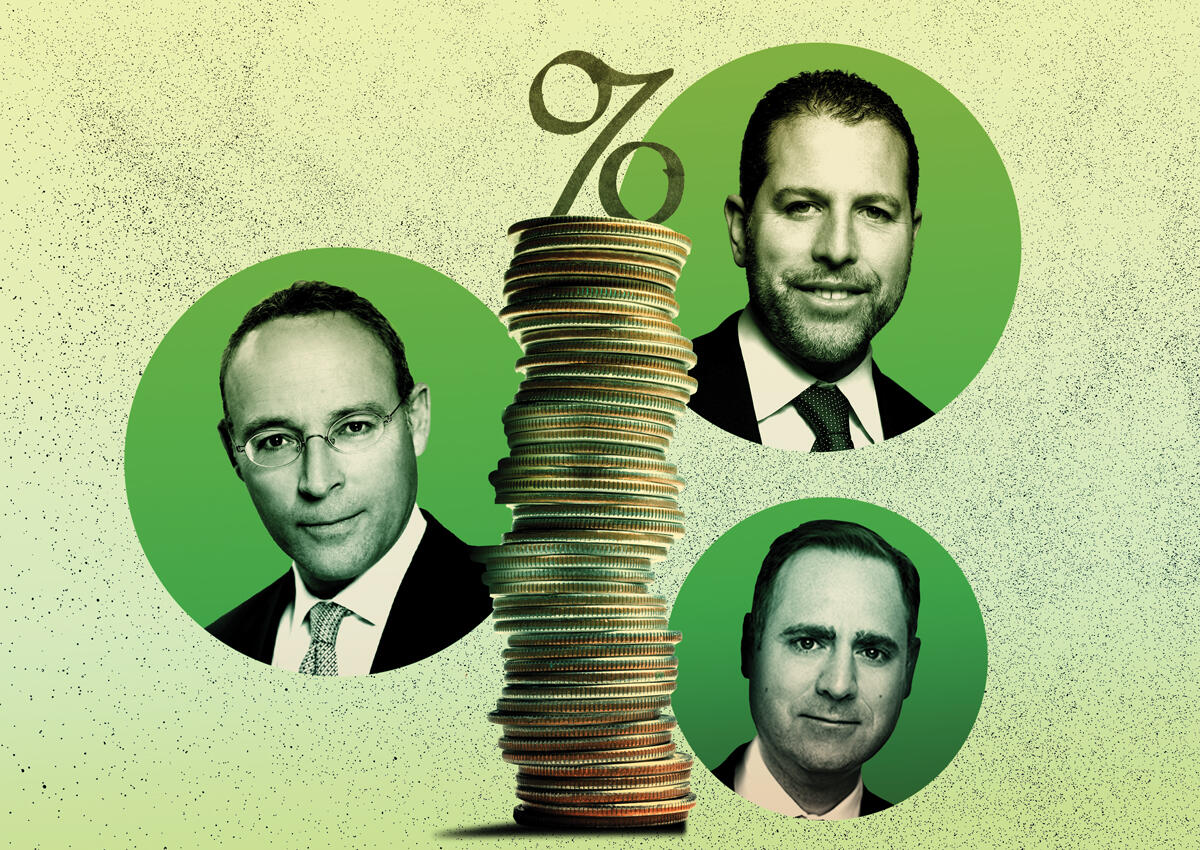Two years ago, the Federal Reserve was purchasing billions in mortgage-backed securities, reducing the rate it charged banks for loans and relaxing regulations on banks. The policies led to an era of nearly free money for real estate players, and spurred a dealmaking bonanza.
Now, some see the Fed as the problem. It increased rates to 4 percent from near zero in less than a year. Everything from construction loans to refinancings to derivatives used to hedge rate fluctuations to the warehouse lines lenders rely on has become more expensive.
“This is the toughest lending environment that we’ve seen since the Global Financial Crisis,” said Mike Comparato, head of real estate at asset manager Benefit Street Partners. “Cap rates are widening, values are declining and we’re still in the middle of a repricing exercise on assets.”
“A lot of people are just deer in headlights,” he added.
Commercial mortgage-backed securities, a go-to source of financing, saw issuance drop 39 percent in the third quarter compared to the previous year, according to Trepp, which tracks securitized mortgages. Meanwhile, distress vultures are lurking. Apartment developer Patrick Carroll plans to provide up to $250 million in rescue capital to troubled apartment owners. Starwood Capital’s Barry Sternlicht said he sees incredible distressed opportunities on the horizon.
Lending may have slowed, and distressed funds are ready to pounce, but there is no blood in the streets. There are no massive portfolio sales, no large-scale defaults, no runs on banks. At least not yet.
“I’m definitely not getting a sense of panic at all from the banks,” said Janice Mac Avoy, co-head of Fried Frank’s real estate litigation practice. “It’s much more: ‘Rates, they’re crazy right now, a lot of these projects that used to make sense with cheap money don’t make sense. But let’s just pause for now.’”
Can’t bank on banks
For the past 40 years, interest rates have largely fallen. Borrowers could refinance with cheaper debt than their previous loan. And since the last recession, real estate values for the most part have gone up, making lenders comfortable offering high-leverage loans.
Now, the math has changed. Rates are up and values, particularly for Class B and C office buildings, are uncertain.

Construction lending has become especially vulnerable to this new paradigm. Lenders are cautious about taking on leverage, while assumptions about cap rates — expected rates of return on properties — are more difficult because no one is sure how high interest rates will rise. Construction lending has the added risk that a project won’t get off the ground, leaving the lender to foreclose on the property or find another developer to finish it.
All of this has made banks wary.
“It’s definitely much more difficult to get construction financing today,” said Miki Naftali, CEO of Naftali Group, a developer active in New York and Miami, who recently scored $385 million construction financing for its rental and condo project in waterfront Brooklyn from Bank OZK. “It’s a very small group of developers who can get financing,”
Developers are not required to go vertical, however. They can always find short-term financing to delay the project until the market settles. Land taxes are also relatively cheap compared to property taxes, leaving some owners to just sit on vacant land. The family company of the late developer Sheldon Solow owns an undeveloped parcel in Midtown Manhattan with an annual tax bill of just $1.5 million per acre, according to the Wall Street Journal.
Loan maturities are a different story. Borrowers eventually have to refinance their existing loans. One major problem: Key sources of refinancings, including the CMBS market, are tightening.
A recent report by the New York Federal Reserve said banks may be tighter on liquidity than was once believed.
“I’ve had a couple of clients call and say the same thing: ‘We had a nonbinding term sheet with the lender to refinance,'” said Mac Avoy. “And now they’re saying, ‘Wait, who are you? I don’t really remember who you are, but you better pay us off in six months.’”
For lenders, the office market carries the biggest refinancing risk. A recent analysis from NYU’s Arpit Gupta and Columbia University’s Vrinda Mittal and Stijn Van Nieuwerburgh estimated that by 2029, the city’s office buildings could drop in value by 28 percent, or $49 billion.

A rendering of 218 Front Street in Dumbo (CityRealty)
Case in point: a 40-story Class A office building at 1330 Sixth Avenue just sold for $320 million, compared to the $498 million Harry Macklowe paid for it 15 years ago. And deals for Class B and Class C properties in Manhattan just aren’t happening.
“In office transactions, both on the equity side and the debt side, it’s just really illiquid right now,” said Matt Salem, head of real estate credit at KKR. “And I think that there’s going to be a pretty large distress cycle.”
Some companies are still locked into long-term leases in their buildings, and loans have yet to mature. But when the loans come due, lenders will not be able to kick the can down the road, especially if rents start to fall.
“The day of reckoning will come at some point, because Class B and C offices that traded at higher prices over the past few years are just not competitive from a cost perspective,” said Salem.
It’s not all doom and gloom, however. Deals are getting done, albeit at a slower pace and higher cost.
This summer, Bank OZK also provided a $176 million loan to Domain Companies for a Gowanus rental project. In November, the bank extended an $81 million loan to Aria Development for a luxury condo tower in Downtown Miami.
Other regional banks such as Valley Bank, which recently acquired Bank Leumi USA, have been key lenders to construction projects across New York City, especially in Brooklyn. Valley recently provided $99 million in construction and gap financing to Cheskel Schwimmer’s Chess Builders for its mixed-use project in Brooklyn’s Vinegar Hill.
“Some of the larger banks pulled back on the construction. So that puts a lot of pressure on some of the mid-size regionals [banks],” said Chris Coiley, head of commercial real estate at Valley for New York, New Jersey and Pennsylvania.
Debt funds like Madison Realty Capital have also stepped in. The firm recently launched its sixth debt fund with a $2.25 billion target. Its co-founder Josh Zegen said the firm is seeing opportunities to lend where the borrower has to secure a new loan either because of cost overruns or a loan coming due. Madison provided an additional $167 million on an existing construction loan for a four-building apartment complex in Jersey City, increasing the loan total to $395 million.
“Banks only want to do business right now with their best clients if they have capital availability,” said Zegen. There is “not much new loan growth from banks.”
Zegen said Madison is also beginning to notice loan sales, which are often a sign of impending distress. In addition, he said, some lenders are having issues with their warehouse lines, causing them to back out of deals.
But the question is, how bad will it get? Owners and lenders are holding off, hoping the Fed will lower rates, praying the market will stabilize and inflation will be tamed.
Not everyone is so optimistic.
“There could be massive equity losses, I think there could be meaningful defaults,” said Comparato. “It could get really, really nasty.”

